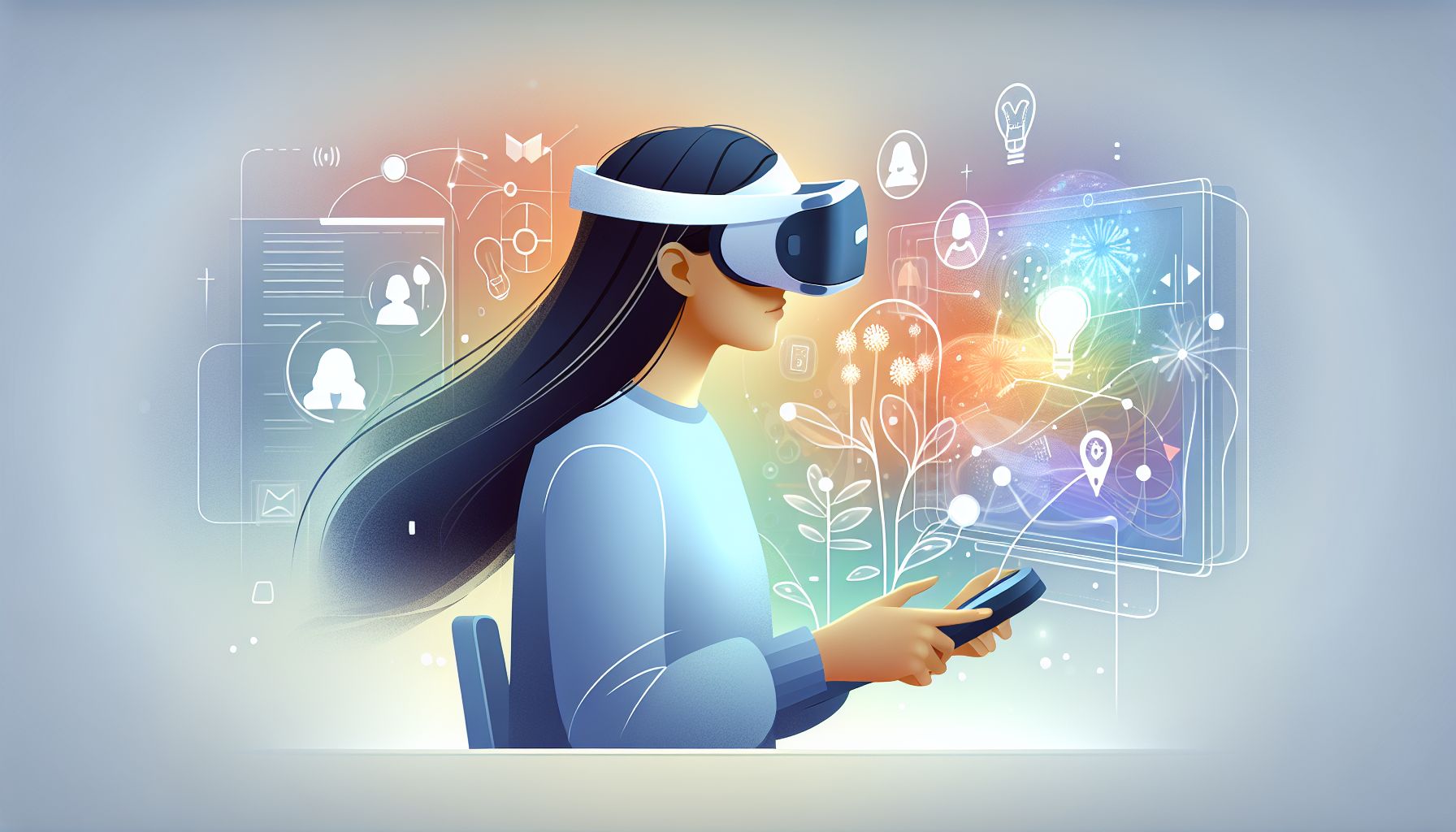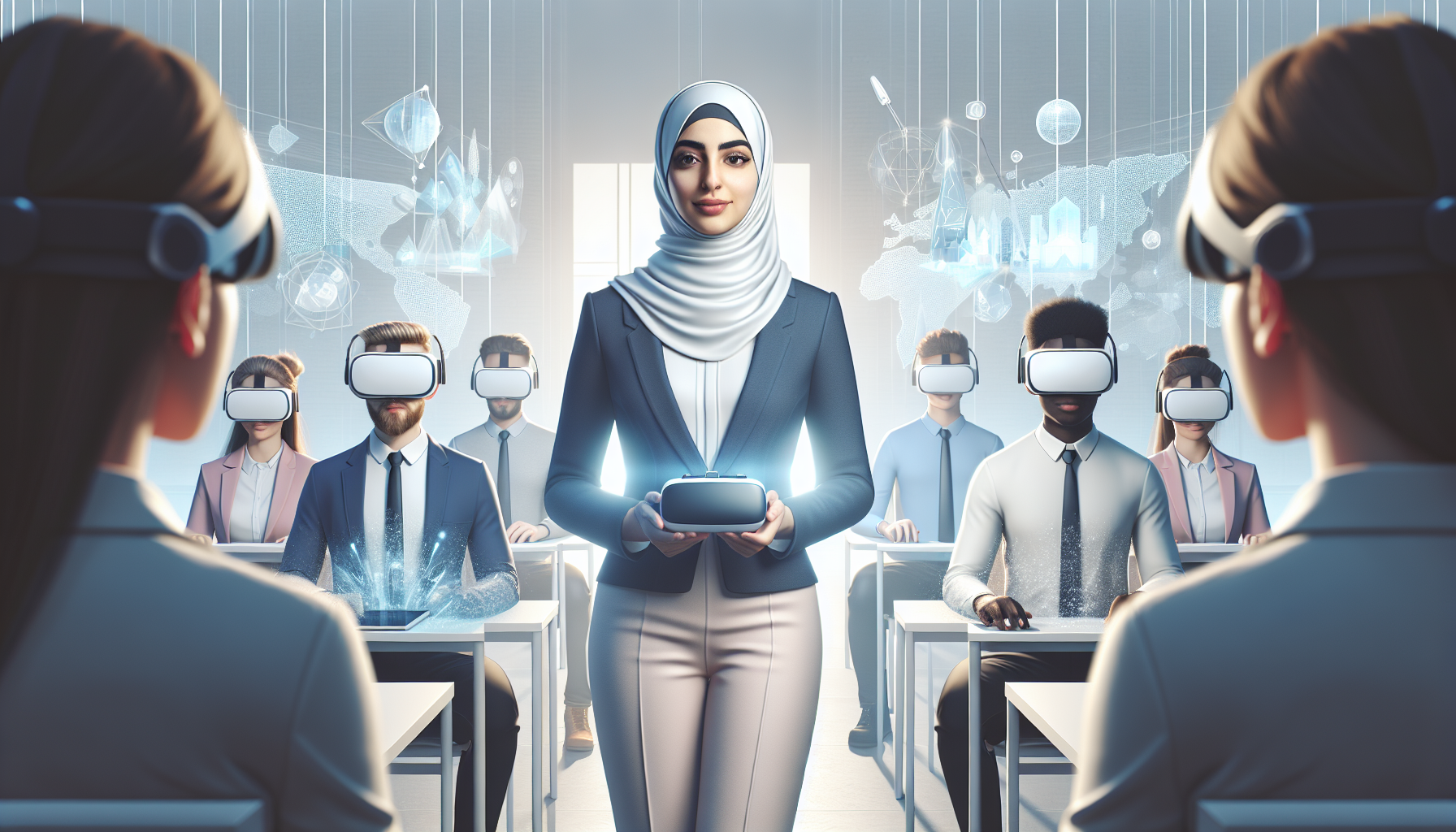Implementing virtual reality (VR) in online courses might sound like a daunting task. You might be thinking, “How do I even start?” or “Is this really worth it?” Well, you’re not alone! Many educators share your concerns about diving into the techy world of VR.
But stick around! If you stay with me, you’ll discover not only the steps to seamlessly integrate VR into your online courses, but also the exciting benefits it can bring to your students’ learning experiences. Trust me, by the end, you’ll see how manageable and rewarding it can be.
We’ll explore practical steps for implementation, the right tools to use, and how to keep your content engaging and accessible. Plus, we’ll sneak a peek into the future of VR in education. Let’s get started on this thrilling journey together!
Key Takeaways
- Assess course needs to identify how VR can enhance learning through simulations or immersive environments.
- Research and select VR content that aligns with your curriculum and let students pilot test it for feedback.
- Create a detailed integration plan for including VR sessions in your course schedule.
- VR increases engagement by immersing students in realistic scenarios and caters to various learning styles.
- Ensure VR tools are user-friendly and compatible with students’ devices, providing necessary resources for help.
- Design engaging content with storytelling, interactive components, and high-quality visuals to enhance learning.
- Focus on accessibility by offering both VR and non-VR options, and design content to be inclusive for all students.
- Regularly assess technical requirements and have support plans in place for troubleshooting issues during VR sessions.

Steps to Implement VR in Online Courses
Implementing VR in online courses is not just about purchasing a headset; it involves a series of strategic steps.
First, assess the needs of your course and identify how VR can specifically enhance learning experiences, such as through simulations or immersive environments.
Next, research and select VR content that aligns with your curriculum; consider platforms that host educational VR simulations.
After that, utilize pilot testing with a small group of students to gather feedback on the VR experience and make necessary adjustments.
Once your VR content is ready, create a detailed integration plan that includes how VR sessions will fit into your existing course schedule.
Finally, provide clear instructions and resources for your students on how to access and use the VR tools.
Benefits of Using VR in Online Learning
The benefits of VR in online learning are compelling and varied, enhancing both engagement and comprehension among students.
Firstly, VR immerses students in realistic scenarios, making complex subjects more tangible; for instance, medical students can practice surgeries in a virtual operating room.
Additionally, VR caters to different learning styles; visual and kinesthetic learners can greatly benefit from hands-on experiences that traditional online classes lack.
Moreover, it encourages collaboration; students can work together in a virtual space, which fosters teamwork and communication skills.
Lastly, using VR can lead to higher retention rates, as immersive experiences are often more memorable than passive learning formats.
Choosing the Right VR Tools and Software
Choosing the right VR tools can feel overwhelming, but breaking it down can make the process smoother.
Start by defining your course objectives, as this will guide you in selecting software that meets those specific educational goals.
Next, consider compatibility; make sure any VR tool you pick works well with the devices your students have access to, whether that’s standalone headsets or mobile devices.
It’s also important to look for user-friendly interfaces, as both instructors and students should be able to smoothly navigate the software.
Finally, check for support and resources provided by the software developers; having ample training materials can make implementation much easier.
Designing Engaging VR Course Content
When it comes to designing VR course content, creativity is key to keeping learners engaged.
Start by analyzing your learning objectives; this will shape the content and ensure relevance.
Incorporate storytelling elements, as a good narrative can significantly boost engagement and help students relate to the material.
Utilize interactive components, such as quizzes or decision-making scenarios, to encourage active participation.
Also, get feedback during the development process; testing with a diverse group can help refine your content and address different learning needs.
Lastly, make use of high-quality visuals and sound; investing in good graphics and audio will enhance the immersive nature of VR learning.

Integrating VR into Existing Course Structures
Integrating VR technology into existing courses can be a game-changer, but it requires some thoughtful planning.
Start by identifying which parts of your course could benefit most from VR experiences, like labs or complex simulations.
Next, redesign those sections to incorporate VR seamlessly, ensuring that the virtual experiences complement the traditional elements rather than replace them.
Consider the time required for students to adjust to using VR; adding a module that introduces them to the technology before diving into VR content can help.
Also, foster communication among students during VR sessions; tools like chat rooms can facilitate discussions and enhance collaboration.
Finally, establish clear learning outcomes for each VR module to keep students focused and ensure that the technology enhances learning rather than distracts from it.
Considerations for Accessibility and User Experience
Accessibility and user experience are crucial when implementing VR in online courses.
Make sure the VR tools you choose are compatible with various devices to accommodate all students.
Design content that provides multiple ways to engage; for instance, offer both VR and non-VR options for lessons when possible.
Providing auditory descriptions or subtitles can also help students with visual impairments engage with VR content effectively.
Gather feedback from students after VR sessions to identify any pain points they experienced; this will help you make improvements.
Lastly, keep an eye on emerging technologies that might enhance accessibility, like eye-tracking or gesture control, as they can make VR experiences more inclusive.
Technical Requirements for VR Implementation
When it comes to technical requirements for VR in education, it’s essential to ensure that everything runs smoothly.
First, assess the hardware needed; a good quality headset and compatible controllers can make a big difference in the experience.
Your institution needs adequate internet bandwidth; VR content often requires high-speed connections for seamless streaming.
Think about a dedicated space for VR sessions, where students can move safely without distractions or hazards.
Ensure you have the necessary technical support; having a troubleshooting plan in place will help resolve any issues quickly.
Lastly, regularly update your VR software and hardware to take advantage of improvements and new features that can enhance the learning experience.

Training Instructors and Students on VR Use
Getting everyone up to speed with VR is crucial for a smooth transition into this new learning landscape.
Start by providing dedicated training sessions for instructors; this can help them feel confident and capable of integrating VR into their teaching methods.
These sessions should cover everything from navigating the VR tools to understanding how to effectively use VR for various course objectives.
For students, consider creating orientation videos that showcase how to use the VR equipment and access course materials.
Additionally, interactive tutorials can give students hands-on experience in a low-pressure environment before they dive into more complex content.
Lastly, keep the lines of communication open; encourage questions and feedback, as this will foster a supportive learning environment and help improve the VR experience.
Evaluating the Effectiveness of VR in Courses
Regular evaluations can help you understand how well VR is working in your courses and where improvements can be made.
Start by setting clear objectives at the beginning of your course; these will serve as benchmarks for assessing success.
Collect both quantitative and qualitative feedback from students after each VR session to gauge their learning experiences.
Look for patterns in the feedback; this could highlight what students enjoyed or found challenging during the VR activities.
Consider using assessments that measure retention and understanding; comparing these results with traditional teaching methods can be illuminating.
Finally, don’t hesitate to make adjustments or iterate your VR content based on student input; continuous improvement is key to effective learning.
Future Trends in VR and Online Education
The future of VR in online education is brimming with potential and creativity.
One trend to watch is the enhancement of VR environments with Artificial Intelligence, allowing for more personalized learning experiences.
We’re also likely to see increased collaboration capabilities, with students able to interact within shared virtual spaces in real-time, no matter their location.
Wearable technology is another area of growth; the integration of haptics and motion tracking may create even more immersive learning environments.
Additionally, expect VR content to become more accessible and affordable, encouraging wider adoption across various educational platforms.
Ultimately, as technology advances, the opportunities for enhancing engagement and interactivity in online courses through VR will keep expanding, making learning more dynamic and enjoyable.
FAQs
Key steps include evaluating needs, selecting appropriate VR tools, designing engaging content, integrating VR into existing courses, providing instructor training, and continually assessing the effectiveness of VR applications in learning.
VR enhances online learning by providing immersive and interactive experiences, improving engagement, fostering a deeper understanding of complex concepts, and allowing learners to practice skills in simulated environments.
Consider accessibility by ensuring content is usable for individuals with disabilities, providing alternative experiences, utilizing customizable controls, and complying with accessibility standards to promote inclusive learning.
Technical requirements typically include a VR headset, compatible hardware (e.g., PC or mobile device), a stable internet connection, and proper software installations for running VR applications effectively.
